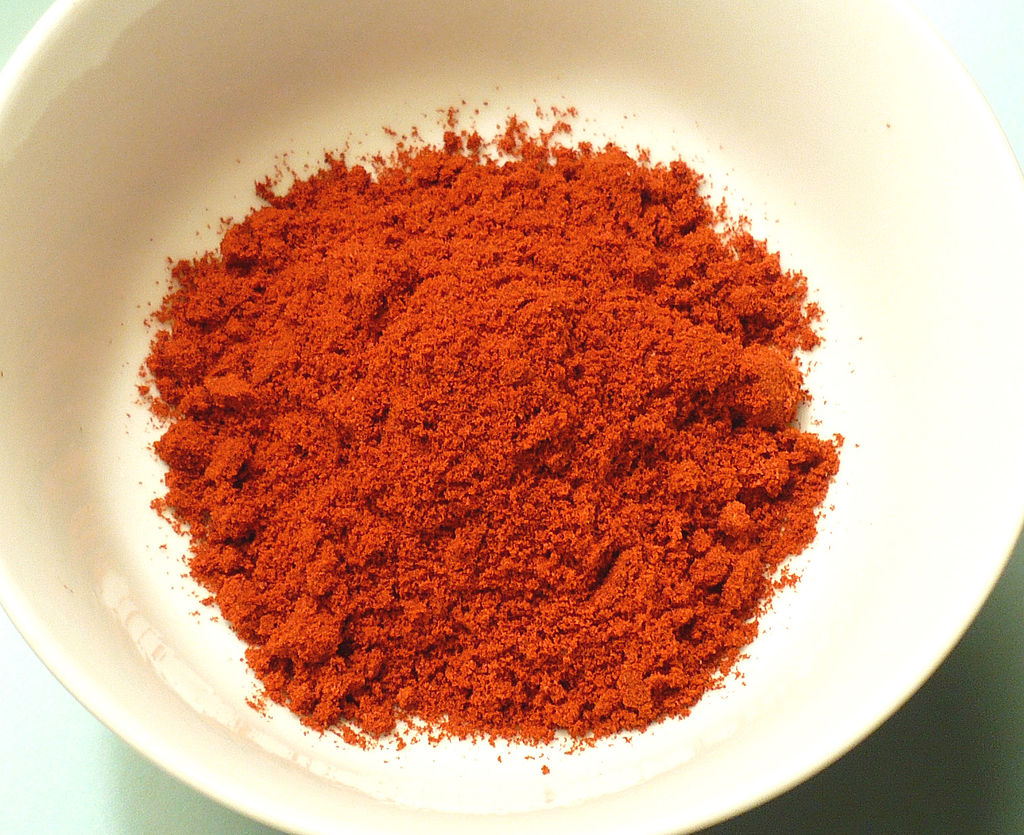
If you are looking for a spice to substitute for paprika, there are a few different options you can use. Substitutes for paprika include chili powder, cayenne powder, hot sauce, cajun spice, Aleppo peppers, black pepper, bell peppers, pimento de la Vera, red pepper flakes, and chipotle powder.
Facts About Paprika
Before going into spices which can substitute for paprika, let’s take a look at the history of the spice paprika along with some facts about it.
Paprika is a spice made from certain types of Capsicum annum. The type of Capsicum annum used to create paprika is created by grinding up sweet peppers, tomato peppers, or bell peppers, the sweeter and larger variants of capsicum annum. Because paprika doesn’t have extremely powerful taste, sometimes paprika is combined with spices made out of cayenne pepper or other chili peppers.
The origin of paprika can be traced to Budapest around 1569 when a plant called Hungarian paprika was grown. The original version of paprika was quite spicy and in the early 20th century it was combined with other plants that produced a less spicy, sweeter fruit. The current form of paprika comes from peppers originally grown in Mexico that were traded to Spain. The trade of paprika greatly expanded from this point, and paprika spread out across Asia, Africa, and Central Europe.
While almost all variants of paprika are sweet, there are hot versions of paprika which are produced. Paprika is typically created with the fleshy fruit of the plant, though hotter versions of paprika sometimes include the seeds, calyces, placentas, or stalks of the plant.
Paprika is frequently used to flavor sausages and other meats, goulash, stew and soups, and bread. Paprika is frequently used to garnish food, and the flavor of the spice can be enhanced by heating the spice in oil. The primary usage for paprika is to flavor or garnish dishes.
Substitutions For Paprika
Spices can add both flavor and aroma to a meal, enhancing the meal. The correct combination of spices can make a bland meal a delicious dish. One of the most popular spices is paprika, which gives food a rich, warm, pepper-like flavor.
Paprika is an excellent spice that can augment a wide variety of dishes, thanks to the fact that it does little to alter the primary taste of a dish, instead drawing out the flavor of savory dishes. It also improves the appearance of a dish. If you don’t want to use paprika and instead are looking for another spice to substitute it with, use any of the following species or combinations listed below.
Cayenne Pepper
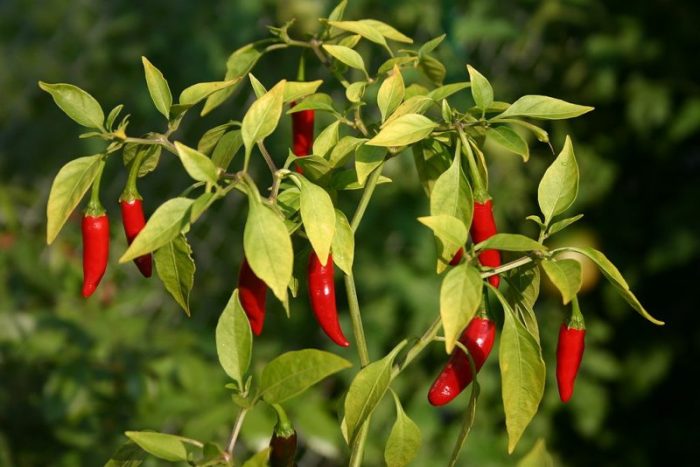
Cayenne pepper has a red hue to it, much like paprika. It is substantially spicier than paprika, however. Photo: By Daniel Risacher – Own work, CC BY-SA 3.0, https://commons.wikimedia.org/w/index.php?curid=1189373
Because cayenne pepper is much hotter than a spice like paprika if you are intending to use it as a substitute for paprika you should use a minimal quality of it. However, cayenne pepper can genuinely enhance the taste of a variety of dishes, from soup to curry to bread to fish. The spiciness of cayenne pepper can be reduced by using honey or sugar along with the pepper. Salt and cream can also counterbalance the spice of the pepper. Cayenne peppers are a particular variety of Capsicum annum, the plant from which many other kinds of peppers such as jalapenos, pimientos, and bell peppers are derived. The Capsicum annum plant is native to South America and North America, although its popularity means it’s grown in other regions of the globe as well.
The spiciness of cayenne pepper comes from the presence of the lipophilic chemical capsaicin. When capsaicin comes into contact with mucous membranes it produces a burning sensation. Capsaicin is most abundant in the fleshy parts of the pepper fruits and in the placental tissue that envelops the seeds of the plant.
Cajun Spice
Cajun spice is created by mixing together white pepper, black pepper, and cayenne pepper. Cajun spice gets its name from the fact that it is frequently used in Cajun dishes. Cajun powder isn’t quite as hot as pure cayenne pepper, and for that reason, it may make a more suitable substitute than cayenne pepper when replacing the spice paprika.
Hot Sauce
Chili sauce, or hot sauce, is created by combining chili peppers and liquid ingredients like alcohol, oil, water, or vinegar. Similar to regular chili sauce, hot sauce can easily be used as a substitute for paprika. Unlike powdered spices chili sauce/hot sauce doesn’t make meals look quite as appealing, but for recipes is where appearance isn’t a huge concern, hot sauce can easily be used.
Aleppo Peppers
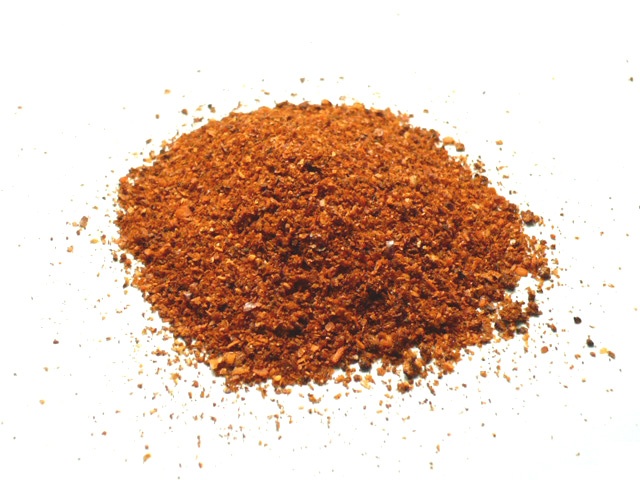
Aleppo peppers have a similar appearance to paprika, making them a decent substitute when appearances matter. Photo: By Badagnani – Own work, CC BY 3.0, https://commons.wikimedia.org/w/index.php?curid=3487477
Aleppo peppers are a variance of the regular Capsicum annum peppers, typically grown and used in the Mediterranean and Middle Eastern regions. They are named after the city of Aleppo which is found in northern Syria. In terms of spice, Aleppo peppers are moderately spicy. They are slightly less spicy than cayenne peppers, in general. Cream, salt, sugar, and honey can be used to offset the spiciness for spicy averse mouths.
Black Pepper
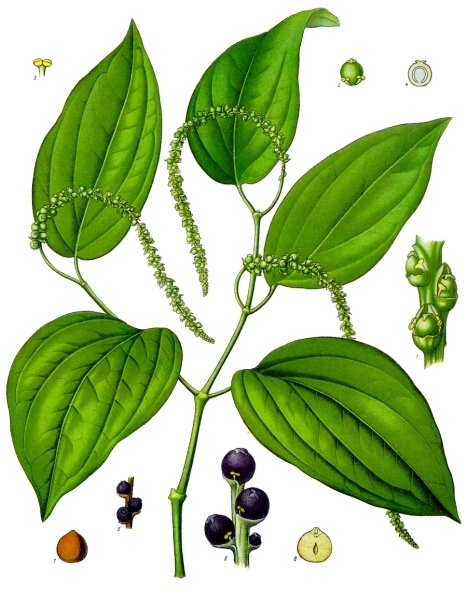
Photo: By Franz Eugen Köhler, Köhler’s Medizinal-Pflanzen – List of Koehler Images, Public Domain, https://commons.wikimedia.org/w/index.php?curid=255428
Black pepper is one of the most commonly used spices, and it’s distinctive yet comparatively mild flavor (when compared to chili powder) can help flavor many different dishes. Black pepper comes from a kind of flowering vine called Piper nigrum, which is native to southwestern India, though it is now grown all around the world. Vietnam is currently the biggest exporter of black pepper. If just a little spice is needed in the recipe, black or white pepper can be used as an alternative for paprika, though it probably won’t have the distinct flavor of paprika.
Pimenton de La Vera
Much like paprika, Pimenton de la Vera has a brick-red hue. Pimenton de la Vera can have three different levels of spiciness, which run from somewhat sweet to rather hot, and the milder versions make an excellent substitute for paprika. Pimenton de la Vera can be used to enhance the flavor of yogurt, potatoes, fish, lamb, nuts and more.
Bell Peppers
Paprika spice can be made at home by using bell peppers. You can pull the stems from bell peppers and dehydrate/dry them until the stems are brittle and can be ground up easily. The bell peppers can also be put in an oven at approximately 120 degrees Fahrenheit. After the peppers are dried they can be placed in a bag and ground up, using a small mill grinder and then putting the ground paprika through a sieve. Paprika made at home is frequently more flavorful and fragrant than store bought paprika because it is fresher. As mentioned, bell peppers are derived from Capsicum annum, much like many other peppers. The sweetness of the pepper comes from selective breeding to produce plants that create peppers lacking capsaicin.
Chipotle Powder
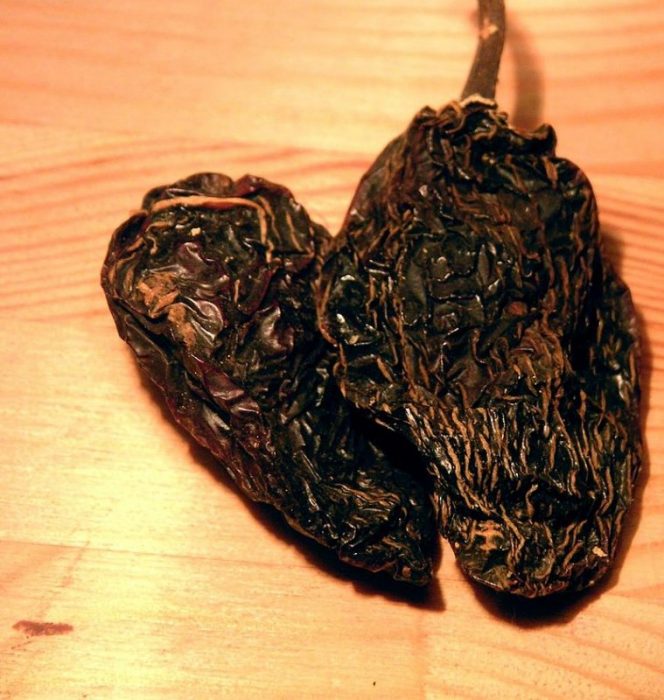
Photo: By User:Carstor – Own work, CC BY-SA 2.5, https://commons.wikimedia.org/w/index.php?curid=954523
Chipotles are a type of smoke-dried jalapeno, and they are typically used in southwestern and Mexican dishes. The jalapenos used to make public chilies are mainly produced in the state of Chihuahua, and the harvested chilies can be bought in many different forms such as chipotle pods, chipotle powder, and even a chipotle meat marinade. Chipotle powder is an excellent paprika substitute due to the fact that it has a similarly smoky flavor to paprika, though it gives dishes created with it a spicier flavor.
Red Pepper Flakes
Red pepper flakes are created by grinding up hot red peppers, and much like paprika, they have a similarly smokey (though spicier) flavor. Mild red pepper flakes can easily substitute for paprika, though the quantity of the meal should be adjusted to compensate for the increased spice level.
Other Chili Powder
Chili powder is made out of hot chilis. There are a wide variety of different chili powders available, each made out of a different kind of chili. The chilies used to create chili powder include chipotle, jalapeno, Korean red chilies, and ancho/poblano. Some chili powder contains cumin. Much like cayenne pepper, if the pepper is used as a substitute for paprika, the spice level should be reduced by using honey or sugar along with the pepper. Salt and cream can also counterbalance the spice of the pepper.
Tomato juice can be combined with chili powder to enhance both the flavor and color of a meal. Chili powder or hot sauce can approximate the smoky flavor of paprika and tomato sauce can substitute for water in the recipe.









